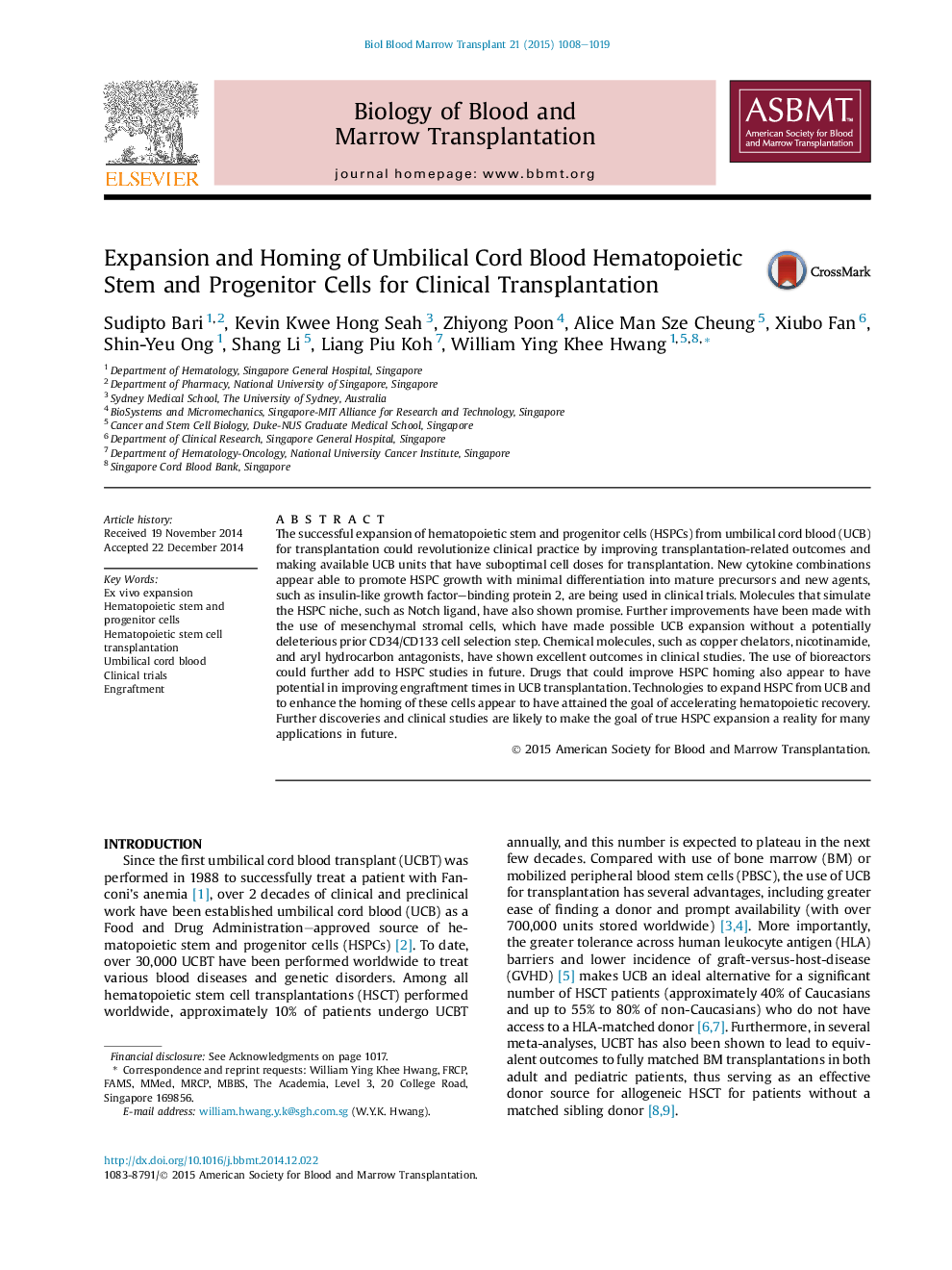| Article ID | Journal | Published Year | Pages | File Type |
|---|---|---|---|---|
| 2101547 | Biology of Blood and Marrow Transplantation | 2015 | 12 Pages |
•Umbilical cord blood transplantation in adults is limited by low cell dosage•Umbilical cord blood can be expanded in ex vivo cultures before transplantation•Pretreatment of umbilical cord blood enhances their homing capacity in bone marrow•Expanded and pretreated umbilical cord blood has shown promising ability to enhance bone marrow engraftment
The successful expansion of hematopoietic stem and progenitor cells (HSPCs) from umbilical cord blood (UCB) for transplantation could revolutionize clinical practice by improving transplantation-related outcomes and making available UCB units that have suboptimal cell doses for transplantation. New cytokine combinations appear able to promote HSPC growth with minimal differentiation into mature precursors and new agents, such as insulin-like growth factor–binding protein 2, are being used in clinical trials. Molecules that simulate the HSPC niche, such as Notch ligand, have also shown promise. Further improvements have been made with the use of mesenchymal stromal cells, which have made possible UCB expansion without a potentially deleterious prior CD34/CD133 cell selection step. Chemical molecules, such as copper chelators, nicotinamide, and aryl hydrocarbon antagonists, have shown excellent outcomes in clinical studies. The use of bioreactors could further add to HSPC studies in future. Drugs that could improve HSPC homing also appear to have potential in improving engraftment times in UCB transplantation. Technologies to expand HSPC from UCB and to enhance the homing of these cells appear to have attained the goal of accelerating hematopoietic recovery. Further discoveries and clinical studies are likely to make the goal of true HSPC expansion a reality for many applications in future.
